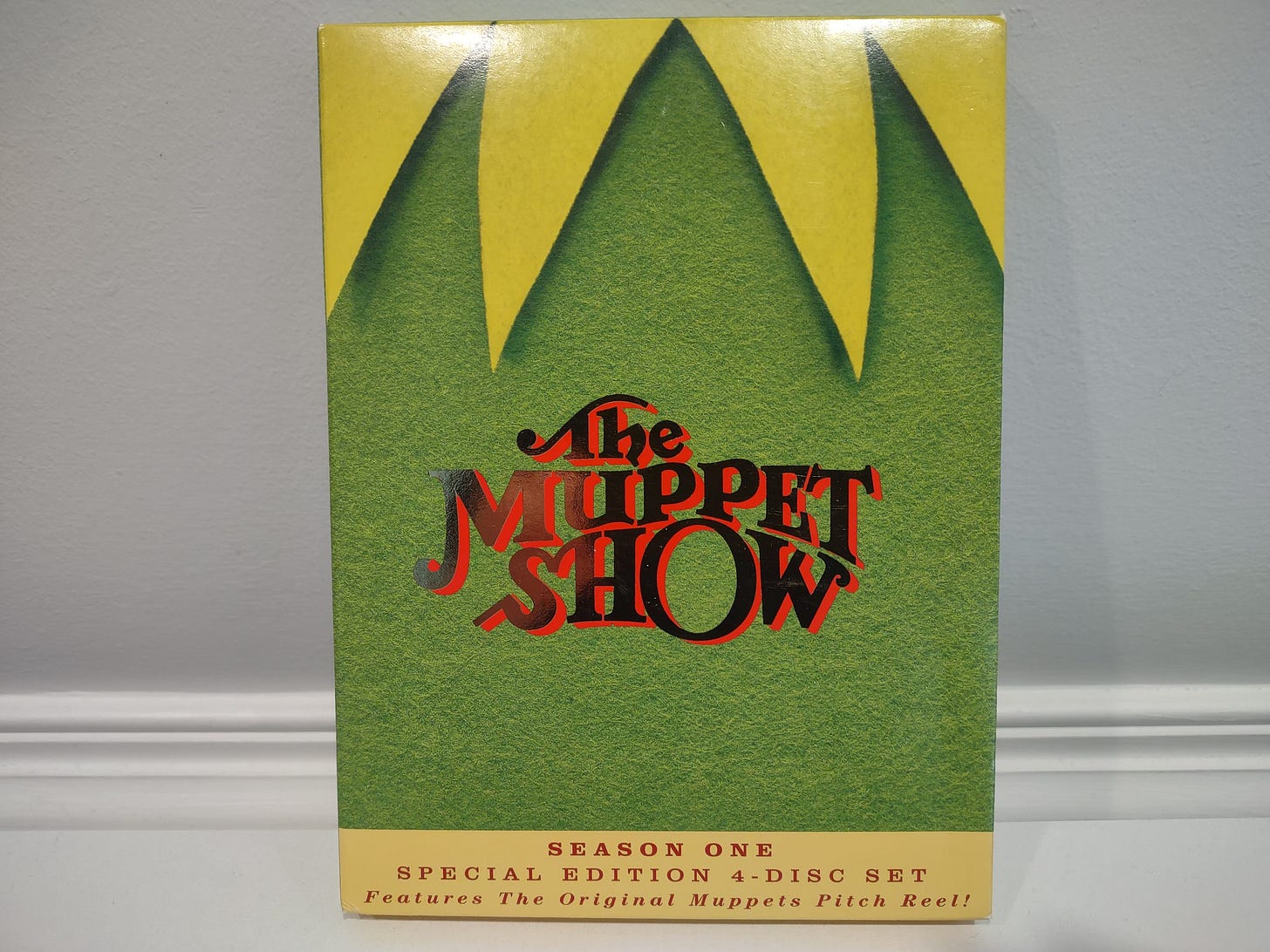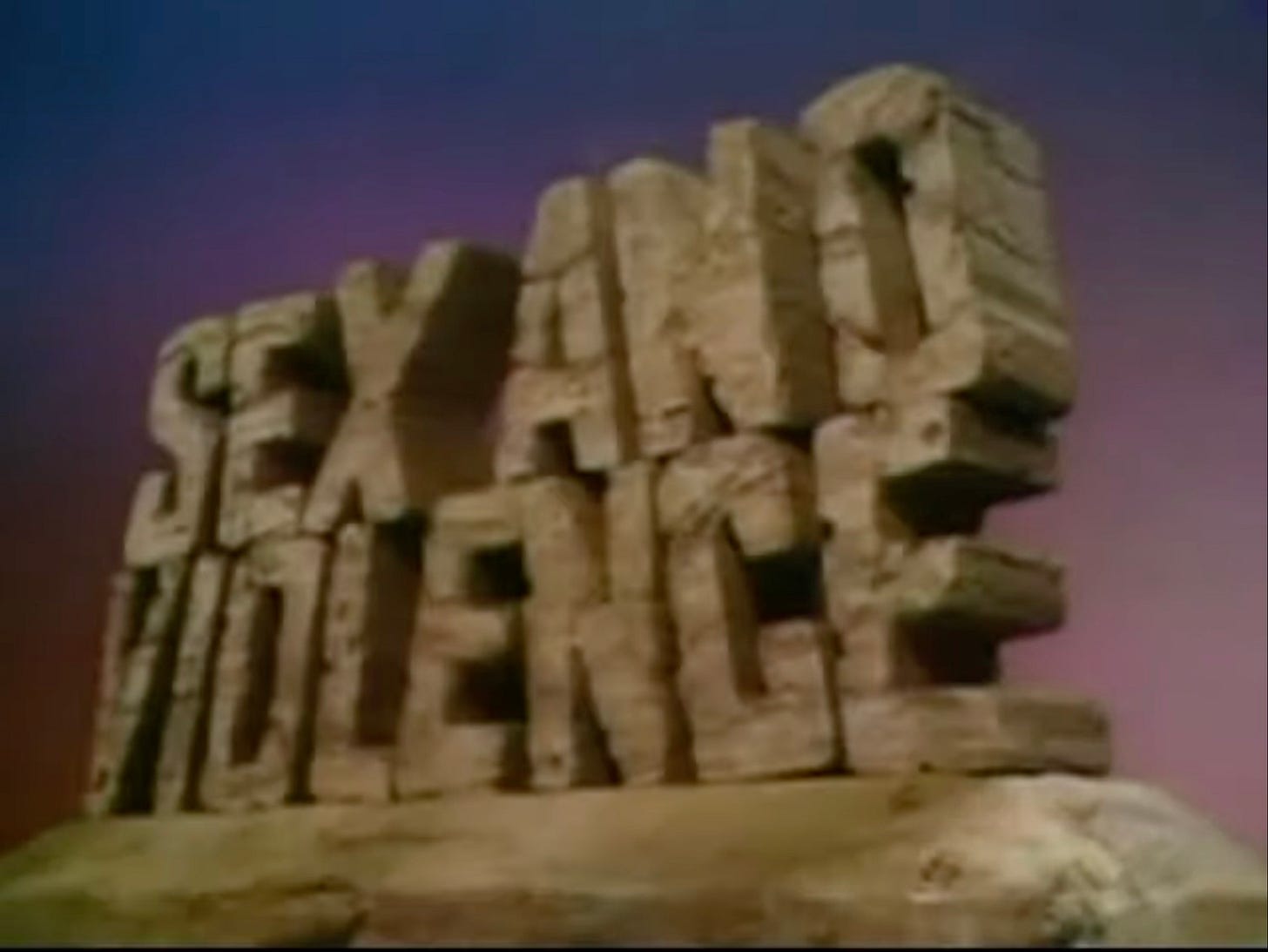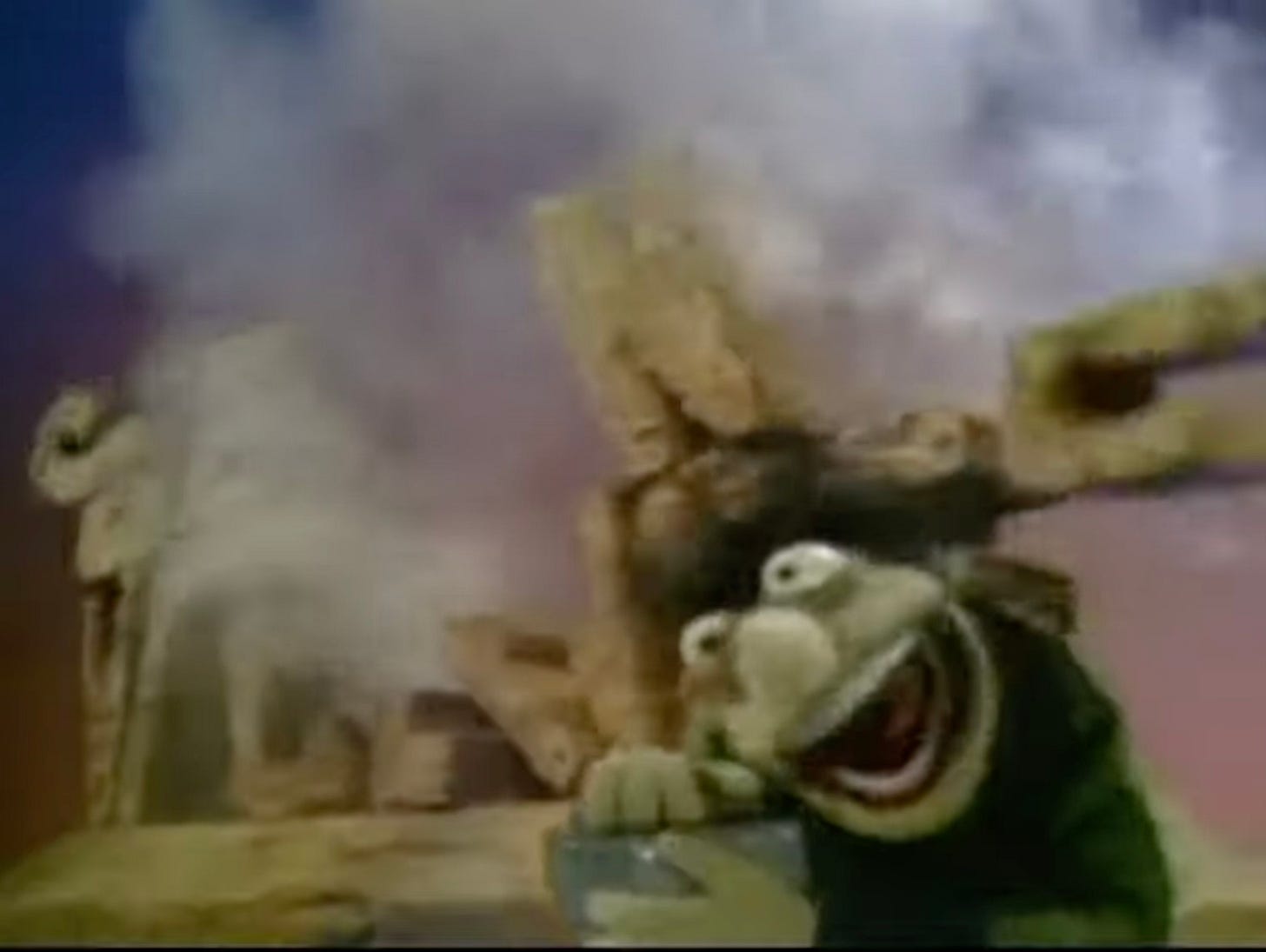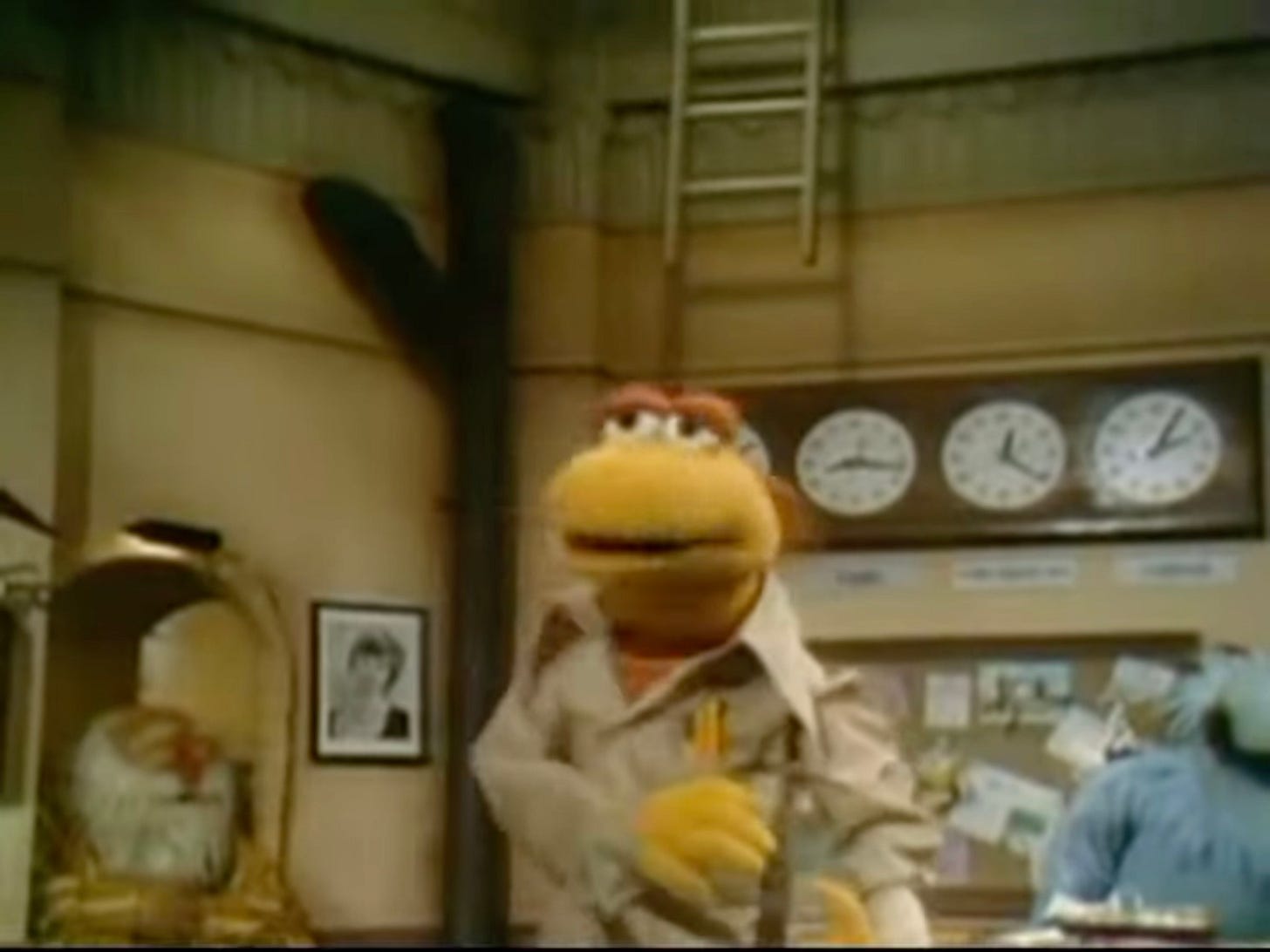I’m always up for a Muppet-related documentary, so naturally I had to watch Jim Henson: Idea Man when it debuted on Disney+ last week.
Ron Howard directed this tribute to the man who gave us the Muppets. It’s an affectionate, respectful documentary that presents Jim Henson as a restless creative spirit, a man who was compelled to bring his imagination to life and who wanted to bring all of his imagination to life.
Henson was not content with a steady paycheck or one big hit. Early in his career, he made commercials using proto-Muppets, and though he milked the projects for all the fun he could, commercials were never going to be artistically satisfying for him. Sesame Street allowed him to stretch himself further, but as much as he enjoyed and was committed to the show, he never wanted to limit himself to children’s television. The Muppet Show was a dream come true, but after five seasons, he had fulfilled that dream and it was time to move on to new projects and new ambitions. And it was a heavy blow when his fantasy movie Labyrinth opened to a rather mixed reception.
The documentary features plenty of archive footage, including the aforementioned commercials, Henson and Frank Oz’s appearance on The Orson Welles Show, and so much more. Fun facts abound, such as how the simplicity of Kermit’s design allowed Henson to express more of himself through the character.
There are also interviews with family and colleagues. Not at all surprisingly, no one speaks ill of him. This is no exposé—no “dark side of Jim Henson” nonsense here. The film acknowledges his marital difficulties but never vilifies him. A sincere appreciation for his work and accomplishments permeates the entire production, and there is indeed plenty to appreciate.
If anything, the documentary feels a little incomplete. For example, it glosses over Fraggle Rock aside from a quick mention, which seems like a glaring oversight. But perhaps that just demonstrates how much Henson accomplished during his too-short life. To fit everything in, the documentary would have needed to become a miniseries. What’s here is still great, though.
Last year, I watched and wrote about another Muppet-related documentary, I Am Big Bird: The Caroll Spinney Story, so I can’t help but compare the two.
The Spinney documentary explores the man inside the bird, and it was quite enlightening. Overall, I learned more from I Am Big Bird than Idea Man. Granted, going in, I knew hardly anything about Caroll Spinney other than the characters he played, so there was much more to learn.
The Spinney doc humanizes its subject and examines the soul of Big Bird. The new Henson doc celebrates his career and the spirit of relentless, obsessive creativity that went into it. So, the goals differ somewhat, but both are well worth the time of any Muppet fan.
The Muppet Show Pilot That Didn’t Work
The documentary discusses an unsuccessful Muppet Show pilot, which is included as a bonus feature on the Season One DVD collection. Of course I own that, so I rewatched the 1975 attempt.
It’s called The Muppet Show: Sex and Violence. So yeah, they weren’t quite aiming for the all-ages vibe that the actual Muppet Show nailed. As Idea Man notes, Jim Henson didn’t want to confine himself to doing only children’s television.
And let me tell you, the title is more than a little awkward to type into a search engine. Muppets … s … e … Let me finish the whole thing before you judge!
Title aside, there’s no sex in this pilot (thank goodness), and the violence is of the standard Muppet nature, such as explosions that don’t actually hurt anyone. “Sex and Violence” is merely the first joke. We open with an image of those three words as the announcer proclaims, “Ladies and gentlemen, presenting the end of sex and violence on television.”
And then Crazy Harry detonates the words “Sex and Violence.”
There. No more “Sex and Violence” on your television. As promised!
It’s hardly adults-only fare; it’s just not aimed specifically at small children. It feels like a milder prototype for Cartoon Network’s Adult Swim, long before there was a Cartoon Network or an Adult Swim. I probably would not have watched this show as a small child in the ’80s, but stoners of the ’70s might have latched onto the random, choppy absurdity of it all.
Sex and Violence is far less cohesive than what we eventually got. It’s not even clear what the specific premise of this show is, other than stringing together a mix of quick sketches.
The eventual Muppet Show is about trying to put on a live show each week despite the inevitable chaos that swirls around everything. The theater gives us a solid setting and is almost like a character itself. Every episode implies the question, Can they pull off another show? That creates just enough tension to glue all the antics together.
But in the unsuccessful pilot, the main cast might be filming a TV variety show, or maybe they are putting on a live theatrical production. Unless I missed a line, it’s not explicit. The various sketches take place wherever they need to take place, including Mount Rushmore, where the presidential heads crack various jokes.
Kermit is not the star of this show. He merely cameos. Filling the Kermit role is a Muppet named Nigel (performed by Henson) while Sam the Eagle (Frank Oz) and the musician Floyd (Jerry Nelson) round out the core trio. And there’s something vaguely familiar about Nigel’s design.
He could almost be Red Fraggle’s father. Anyway, Nigel’s big break may not have panned out, but as a consolation prize, he ended up conducting the orchestra each week during the actual Muppet Show.
The pilot jumps around wherever it likes, never lingering anywhere for more than a few minutes and usually not even for a full minute. Some bits are almost like newspaper comic strips—a quick gag, in and out, move on to the next. And the show keeps returning to the same scenarios, such as couples dancing in a ballroom, the Swedish Chef doing his thing, Statler and Waldorf sounding especially elderly, and a wrestling match in which the opponents are locked in a convoluted stalemate. The main storyline, as much as there is one, centers on a Seven Deadly Sins pageant, featuring Muppet versions of the sins. All that, and the Electric Mayhem too!
It comes across as an experiment, a lot of Let’s try this out and see what happens. Thankfully, Henson and company didn’t get too attached to this version. Rather, they pushed themselves to keep innovating, leading to results that are still great fun all these decades later.
Sex and Violence merely hints at the greatness to come. It wasn’t there yet, but this episode was another step toward the show that would work and would last. In that sense, it can’t truly be called a failure.
Creativity is an ongoing process—a process Henson devoted his life to. And so many of us are better off for it. As Idea Man’s tagline says, “Never stop creating.”











"The simplicity of Kermit's design allowed Henson to express more of himself through the character." I find this intriguing, similarly to the way Scott McCloud wrote that cartooning allows comic readers to identify with characters better than "photorealistic" art. Anyway, I will always remember Kermit in the swamp with his banjo, singing "The Rainbow Connection."
Great review! Henson is one of my favorite creatives. I know what I'm watching this weekend.